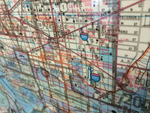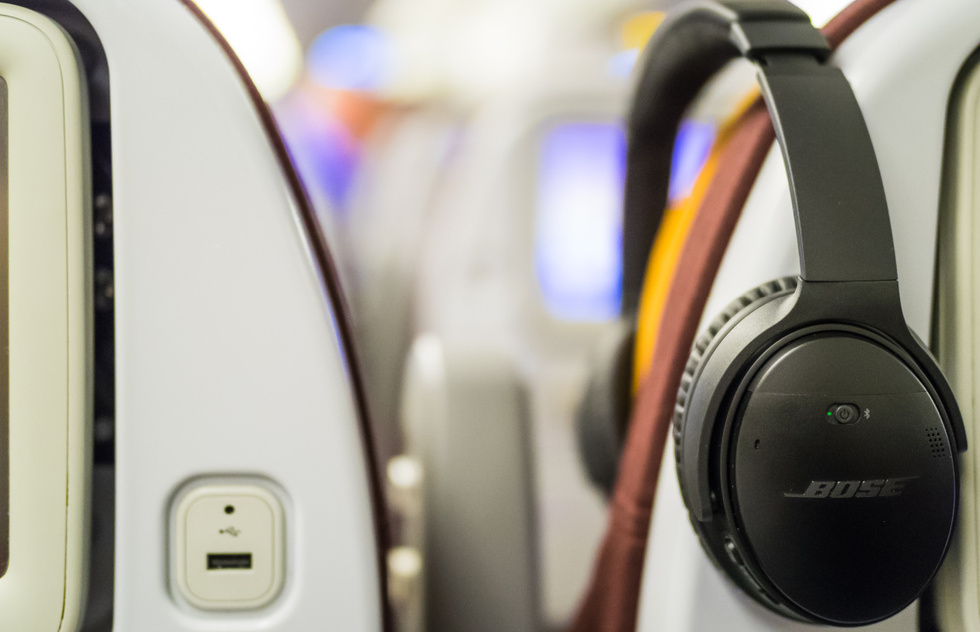From cancellations to Covid, air travel has given nervous flyers no shortage of things to worry about lately.
At the risk of piling on, here’s something else experts say you should take into consideration when flying: your hearing.
It’s probably not something you often think about when boarding an airplane. After all, in-flight noise pales in comparison to a rock concert or a backfiring car.
But hearing damage doesn’t just come from how loud a sound is, according to Dana Helmink, director of audiology and clinical education at hearing aid manufacturer Widex.
It also matters “how long you’re exposed to the noise,” Helmink says. “You can only take so much noise before your auditory system is overdosed … and then that damage is not temporary—it can become permanent.”
Fortunately, from a noise standpoint air travel nowadays is safer than it’s ever been. And experts say there are steps you can take to reduce the risk even further.
Entertainment devices pose the biggest threat.
Obviously, airplanes make a lot of noise, from the airflow and jet engines to the droning AC, whirring gears, and various flapping, buzzing, dinging, and thumping sounds—not to mention the cacophony created by squawking PA systems, screaming infants, and other sources of commotion from passengers and crew members.
Airlines may not be able to quiet all of that racket, but there’s good news on the mechanical front. A 2022 scientific study of the most commonly used long-haul commercial aircraft found that cabin noise “had improved significantly compared to the noise levels reported in earlier studies in the late [1990s].” According to researchers, many cabins were well below critical decibel thresholds, particularly during cruising—the bulk of the flight.
The study cited improved engine performance and innovation in aircraft design as key factors. It also doesn’t hurt that just about all major U.S. airlines have now bid farewell to the last of their notoriously clamorous turboprop planes.
For those reasons, the flying-related concerns of audiologists now have less to do with the aircraft itself, says Helmink, than with what we do while on board (just how loud did you turn up the volume on your iPad the last time you were on a plane?)
“Anecdotally, we are very concerned overall … at the level at which people are using their personal players,” Helmink says. “They can easily be reaching 100 decibels, which is not safe.”
With that in mind, here are some steps you can take to protect your hearing on your next trip.
Pay attention to what aircraft you fly.
When selecting your flight, look carefully at the booking page and you’ll be able to see what aircraft you’d be flying on.
Generally speaking, the newest, most advanced aircraft—particularly for long-haul flights—are equipped with modifications to make the cabin quieter. Boeing, for instance, advertises a “calmer” cabin on its 787 Dreamliner, thanks to the efforts of engineers to address the “causes of annoying noise and vibrations.”
If your itinerary and budget allow, opting for a newer plane usually means a less noisy flight.
If possible, sit toward the front.
Noise levels tend to be higher near and behind the engines, per the CDC, which cites a 2006 study involving commonly used Airbus A321 planes.
That means your best bet for relative quiet is going to be a seat somewhere in front of the wings.
Wear noise-canceling headphones.
One of the reasons we turn up the volume on our devices is to overcome ambient noise in the cabin, but doing that can cause big trouble. That’s why Helmink recommends headphones or ear buds that fit your ears well and also have active noise cancellation.
“It stops you from cranking up your volume as much,” she says.
The headphones distributed by flight attendants, by the way, probably aren’t going to cut it.
Use lower volume, with subtitles.
Of course, we crank our volume so high so we can follow the movie or TV show we’re watching. Helmink recommends turning on the subtitles instead while keeping the volume at a safer level.
“Think, Could I turn it down? And if I can, then I should,” she advises.
Make use of noise meters and limits.
Most personal electronic devices allow you to track your high-volume exposure, and, while you’re at it, set limits on how loud your device can go.
For iPhone users, Yamaha has posted online instructions for turning on the device’s volume limiter in the settings and tracking your exposure to loud sounds using the Apple Health app.
Android phones let you cap audio levels, too, using the “Media Volume Limits” function.
According to hearing experts, anything over 85 decibels can do damage.
Don’t rely on Bluetooth alone.
While your wireless Bluetooth headphones might have noise cancellation, keep in mind that many, many aircraft—especially older planes—don’t have Bluetooth pairing capability yet.
So if you’re planning to use the airline’s onboard entertainment system, you’ll need a viable, wired backup for headphones, preferably with noise cancellation, in addition to your AirPods.
Again, don’t expect high quality from the freebies handed out during the flight.
Take extra care on long flights.
Ultimately, the biggest risk when it comes to hearing loss and air travel involves the length of exposure, Helmink says.
Passengers who spend extended amounts of time in the air, whether on one trip or as frequent flyers, should be especially mindful of the dangers and try to mitigate them—before the damage can’t be undone.






